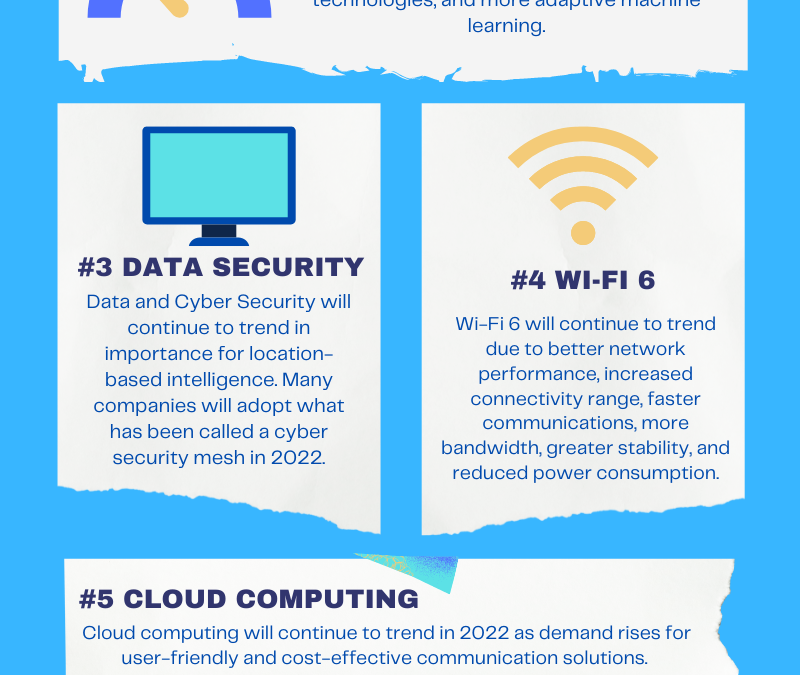 Climate change has been at the top of mind for many, especially with the increasingly hotter temperatures we’ve been experiencing this summer. As such, many industries are looking for solutions to combat climate change and reduce carbon emissions – this is where telecommunications and renewable energy are joining forces.
Climate change has been at the top of mind for many, especially with the increasingly hotter temperatures we’ve been experiencing this summer. As such, many industries are looking for solutions to combat climate change and reduce carbon emissions – this is where telecommunications and renewable energy are joining forces.
Although telecom has always required massive amounts of energy, the COVID-19 pandemic exacerbated the demand for rapid and reliable digital communications. As such, we’ve seen increasing carbon emissions and waste production which is further exacerbating and contaminating global ecosystems. It is expected these negative impacts will continue to soar upwards, leading to detrimental environmental damage if no changes are made.
Telecommunications and renewable energy will need to expand and advance for businesses to reach zero carbon goals and maintain a level of sustainability for the future. With telecom equipment and applications requiring a significant amount of energy, major businesses and organizations within this sector are already exploring innovative initiatives to fight back and embrace renewable energy efforts.
Utilizing Renewable Energy in Data Centers
Modern telecommunications rely on data centers which house servers and networking equipment. As these facilities handle vast amounts of data and applications, they are notorious for their high energy consumption. Their heavy reliance on massive amounts of electricity makes them prime targets for renewable energy initiatives.
Microsoft and Brookfield Renewable Partners are examples of companies partnering to shift data centers to renewable energy. Brookfield, the largest publicly traded platform for renewable power and decarbonization solutions, is set to provide a whopping 10.5 gigawatts of renewable energy capacity across the US and Europe. Microsoft is set to tap into this source. In return, Microsoft will be able to support the increasing demand for cloud services through the new pipeline of renewable energy, including wind, solar, and new carbon-free energy generation technologies. Other companies, such as Telehouse, are adding to these efforts by employing sustainable equipment like energy-efficient generators, digital airflow models, and advanced automation and AI within data centers to further align with renewable energy goals.
The adoption of energy-efficient practices and the use of renewable energy in data centers maximizes environmental benefits. Practices such as those discussed above make it easier to meet energy needs with renewable sources, thereby enhancing the sustainability of the entire telecommunications infrastructure.
Companies Focus on Telecommunications and Renewable Energy

Aside from data centers, telecommunication companies are also focusing on how they can optimize their operations to combat negative effects on the environment.
RE100 is an initiative coming out of the Climate Group involving hundreds of businesses aiming to reach a goal of 100% renewable electricity. Telecommunications companies worldwide are joining in this initiative with the prospect of utilizing renewable energy to ensure a sustainable future. One notable company adhering to RE100 is Verizon, which has committed to “source renewable energy equivalent to 100% of its annual electricity usage by 2030… [and] achieving net-zero carbon emissions across its operations by 2035.” Their push towards 100% renewable energy has included solutions such as utilizing AI, renegotiating supplier relationships, and transitioning to an electric fleet which has already dramatically reduced carbon emissions.
Future Trends and Challenges
Looking ahead, the telecommunications industry is poised to become a major driver of renewable energy adoption worldwide, leading to green telecom networks. Natural energy innovations like wind and solar-powered technologies are becoming a common source of energy due to their higher efficiency with lower associated costs. Telecom towers in Bangladesh are examples of this shift’s success, having moved away from diesel and adopting renewable energy sources. Other advancements include utilizing low-powered rectifiers, Li-ion/LFP batteries, and advanced solar power controllers as well as upcycling older equipment to meet energy-efficient solutions. Financially, these renewable energy sources can offer stability as fossil fuels are typically subject to market volatility, and geopolitical risks, and may be interrupted during emergencies and power outages.
There are, however, challenges that will need to be addressed. Detaching from fossil fuels is a goal but may not be easily obtainable as data centers and other facilities require power 24 hours a day, something renewable energy sources cannot do alone. Not to mention, delayed permitting and supply chains can hold back the implementation of cleaner energy alternatives as well. Data centers, although usually quick to build, will need to be connected to renewable energy sources. This process could take up to five years, with up to a decade for some of the long-distance powerlines that are required.
Telecommunications and Renewable Energy Advance Forward
As technology advances, so must the energy sources that power it. Embracing renewable energy not only reduces the environmental impact it takes to keep these systems online and running, but it also enhances operational resilience and cost efficiency. The telecommunications and renewable energy industries must foster innovation, collaboration, and investments to guarantee a sustainable, connected future for all.
Connect with our specialists to discover how your organization can benefit from our comprehensive GIS datasets.

